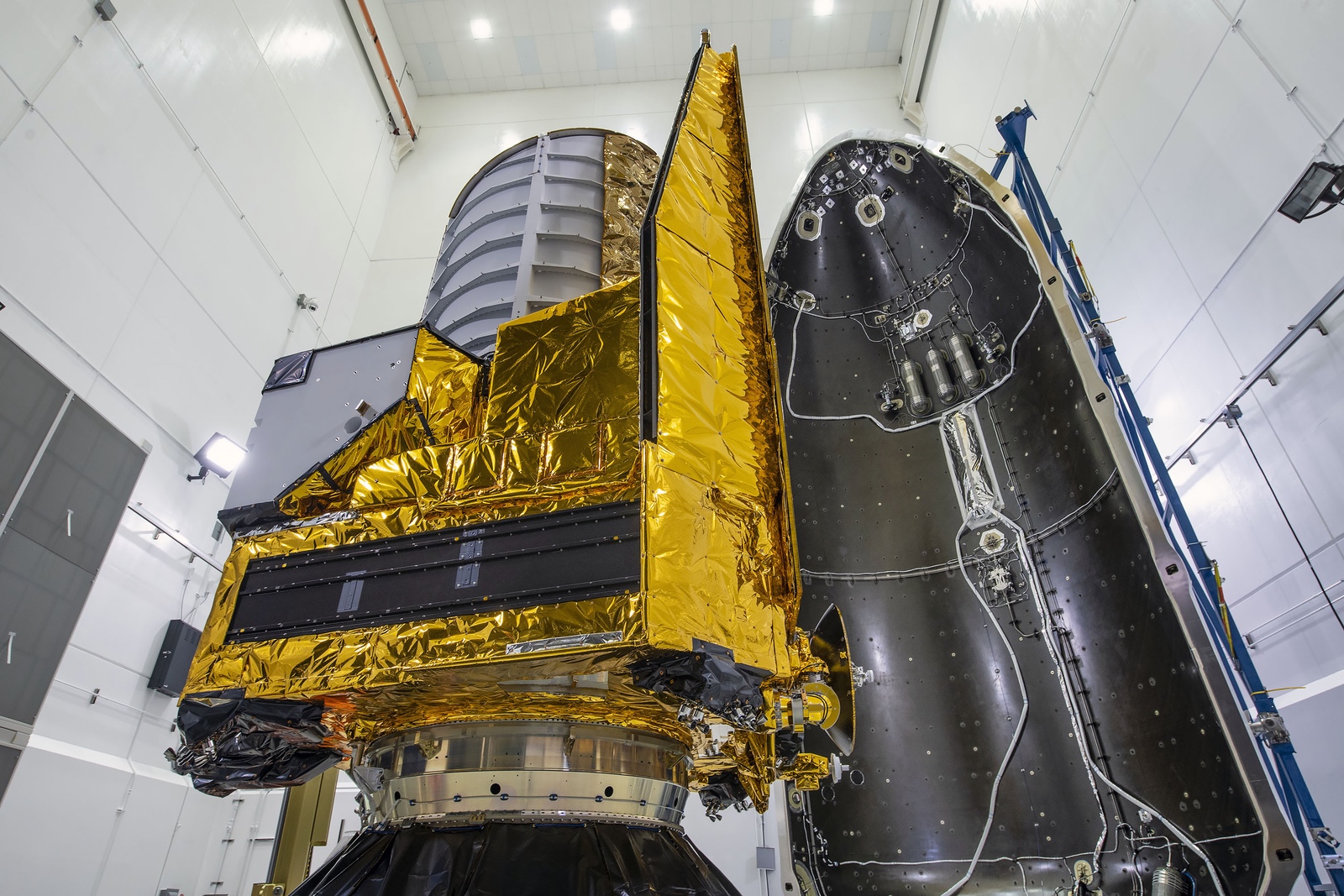WASHINGTON — A European spacecraft is set to launch on a mission to help astronomers resolve an “embarrassing situation” in cosmology, although the launch itself is another kind of embarrassing situation for Europe.
The European Space Agency’s Euclid spacecraft is ready to launch on a SpaceX Falcon 9 rocket. Liftoff is scheduled for 11:11 a.m. Eastern July 1 from Cape Canaveral Space Force Station, with favorable weather expected.
Euclid features a telescope 1.2 meters across equipped with a camera operating at visible wavelengths and a near-infrared spectrometer and photometer. The two-ton spacecraft will operate at the Earth-sun L-2 point also used by the James Webb Space Telescope 1.5 million kilometers from Earth, generating the largest and most accurate 3-D map of the universe to date.
Astronomers hope that Euclid’s observations will shed light on two of the biggest mysteries in cosmology: the nature of both dark energy and dark matter that, combined, comprise 95% of the universe.
“We’re starting from this embarrassing situation,” said Giuseppe Racca, Euclid project manager at ESA, during a June 23 pre-launch briefing. “Only 5% of all the universe is made of atoms and particles that we are all made of. All the rest, 95%, is made of other things that we don’t really know.”
“Euclid should provide a decisive response on the nature of dark energy,” said Yannick Mellier, an astronomer at the Institut d’Astrophysique de Paris and leader of the Euclid Consortium.
Work on Euclid started a decade ago, with an industrial team led by Thales Alenia Space selected to build it. ESA previously planned to launch Euclid on a Soyuz rocket from French Guiana, but was forced to find a new ride when Russia ended Soyuz operations from that European spaceport shortly after its invasion of Ukraine in February 2022.
With no other European launch vehicles available — the remaining Ariane 5 vehicles had been allocated to other missions and the debut of the Ariane 6 has suffered significant delays — ESA was forced to look elsewhere to launch the 1.4-billion-euro ($1.5 billion) mission.
“We were left completely in nowhere land, without any launcher,” said Racca. “It was an incredibly tense period because, in front of us, was the prospect of having to store the spacecraft for two years or more.”
In October 2022, ESA announced it selected SpaceX to launch Euclid on a Falcon 9. Racca said ESA started studies in the summer of 2022 to see if Euclid was compatible with Falcon 9 after being designed for Soyuz. The contract was finalized in December.
Paolo Musi, Euclid program manager at Thales Alenia Space, said that initial analysis showed no issues by switching to the Falcon 9, which was verified by subsequent testing. “We can launch in July because did not have to change any of the hardware.”
While NASA is a partner on Euclid, providing infrared detectors for one of its instruments, ESA arranged the Falcon 9 launch directly with SpaceX. Officials declined at the pre-launch press conference to disclose the cost of the launch vehicle change, citing the commercial nature of the contract with SpaceX.
“What we paid for SpaceX is commercial confidence,” Racca said. He said ESA had already spent “a lot of money” on the Soyuz launch when that contract was terminated. “We had quite some extra cost.”
“It was a big relief to be able to go from Cape Canaveral instead of Kourou,” he added.
